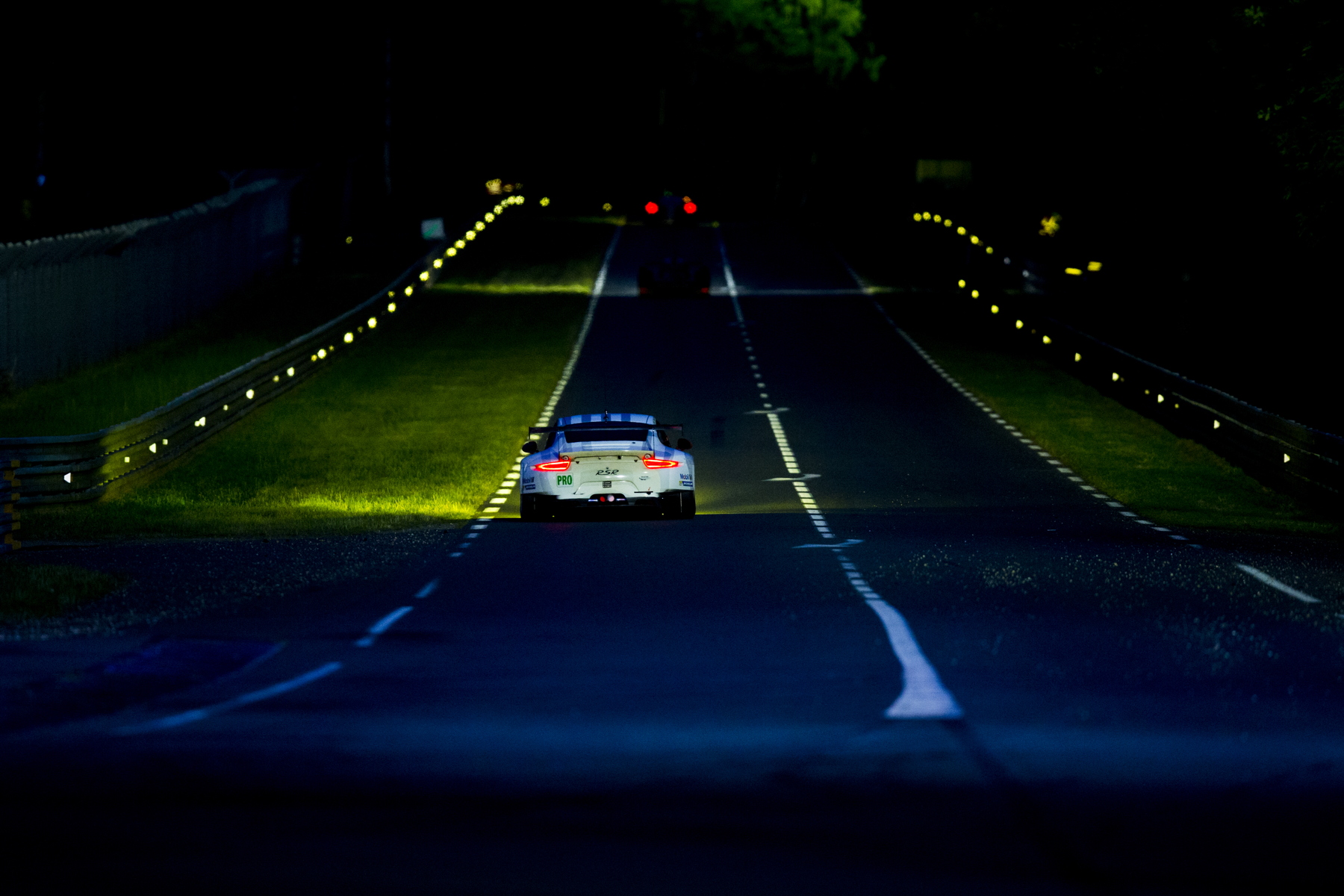24 Hours of Le Mans: A Porsche 911 history
Little did they know it but, in 1966, Jacques Dewez and Jean Kerguen made history at that year’s 24 Hours of Le Mans when – under the ‘J Franc’ banner – the all-French duo gave the Porsche 911 its first finish at the world famous endurance race, winning the two-litre GT class in the process.
The following year, another 911S (entered by the French Porsche importer) again finished 14th overall, defending its two-litre GT crown in the hands of Robert Buchet and works driver, Herbert Linge.
By the end of the decade, the 911’s popularity at Le Mans was increasing with seven cars entered in 1969 (four of which were classified come the chequered flag on Sunday afternoon). However, it wasn’t until 1973 that the first factory-entered 911 would race at La Sarthe.
Running in the famous silver Martini livery, two Porsche 911 Carrera RSRs, their 2.8-litre engines bored out to three litres, were entered in the prototype class against the bespoke Matra and Ferraris. Despite this disadvantage, the no. 46 car finished fourth overall in the hands of Gijs van Lennep and Herbert Müller.
The following year, the same driver pairing would finish second overall in the monstrous Porsche 911 Carrera RSR Turbo 2.1, another neunelfer forced to race among the prototype ranks.
There were no works cars in 1975 (though Gelo Racing took their Carrera 3.0 RSR to fifth overall) but the factory was to return in 1976 under the new Group 5 regulations with the famous, fire-breathing Porsche 935. Rolf Stommelen and Manfred Schurti would finish fourth.
Porsche’s 935 would become a popular tool among privateers and, in 1979, it was one of these independent teams who gave the 935 its one and only overall victory at Le Mans as Klaus Ludwig helped guide the Kremer Racing 935 K3 he shared with Don and Bill Whittington to glory.
935s would remain competitive through until 1982 when John Fitzpatrick Racing finished fourth overall in ‘Moby Dick’ however, in 1983 (with Group C in full swing) only a handful of private 930s and 911 SCs were entered.
By the mid-Eighties the 24 Hours of Le Mans took place without a single GT class entry, although Porsche did race the experimental 959-based Group B 961, taking seventh overall in the 1986 running of the French endurance classic.
After the 961’s demise in 1987, Porsche 911s wouldn’t compete at Le Mans again until 1993 when six Porsche 964 Carrera 3.8 RSRs – the brainchild of Jürgen Barth – finished 15th, 16th, 17th, 18th, 19th and 21st. Fittingly it was the Larbre Competition entry of Barth, Joël Gouhier and Dominique Dupuy who took the GT class honours.
1995 saw the debut of the turbocharged Porsche 993 GT2s and GT2 Evos at La Sarthe as Porsche tried to take overall victory. However, with the cars outclassed by the McLaren F1, Weissach got serious producing the 911 GT1 for 1996.
After finishing second in 1996 (and retiring from the 1997 running) an all-new Porsche 911 GT1-98 took victory number 16, Porsche’s last overall triumph to date at the 24 Hours of Le Mans.
Since then, the Porsche 911 has been represented at La Sarthe by various independedent teams running various iterations of the 911 GT3 RSR, from 996 to second-generation 997.
In 2013, the factory team returned to the GT ranks, running two Porsche 991 RSRs to first and second in the GTE-Pro class, before the works outfit scored another GTE podium last year with Marco Holzer, Frédéric Makowiecki and Richard Lietz coming home third.
With strong entries in both the GTE-Pro and GTE-Am again in 2015, the Porsche 911 is well placed to collect more 24 Hours of Le Mans silverware this year.
For more historical online features, check out our full selection of ‘Porsche 911 history’ articles now.






Comments (0)